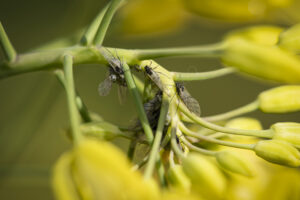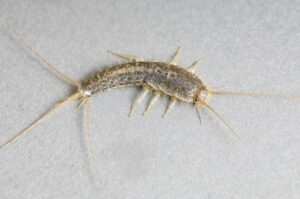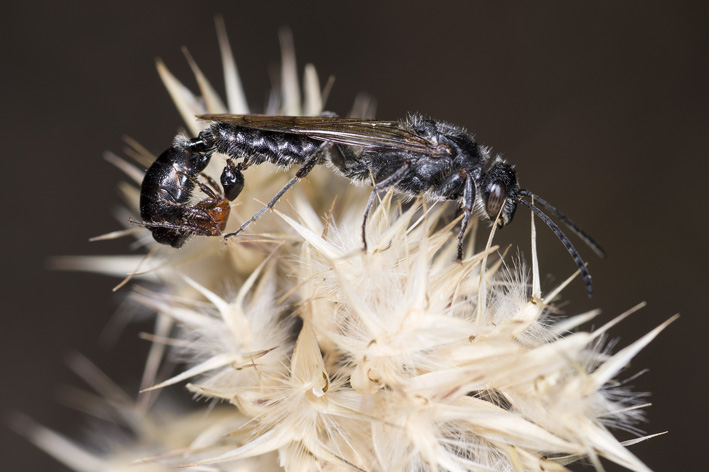The benefits of having wings
By Denis Crawford
Insects are the only invertebrates that can fly, and flight has allowed insects to dominate most terrestrial ecosystems.
Insects first took to the air 350 to 400 million years ago, but like most evolutionary developments, it didn’t happen overnight. It is thought that insect flight initially developed in response to predator pressure. It may have started as a controlled leap or a controlled fall, then progressed through gliding, and finally to muscle powered flight. This progression would have taken millions of years.
The question of how insect wings evolved has not been entirely settled. An early theory was that insect wings evolved from gills. The gill theory has largely been left aside now in favour of whether wings evolved from thoracic lobes, or lateral extensions of the body wall, or a combination of the two. The evolution of vertebrate wings, such as those of birds, is much clearer. Bird wings are modified forelegs.
The development of flight gave insects considerable advantages over all other invertebrates. Flight not only allowed insects to escape from predators more easily but also allowed insects to move great distances to colonise new habitats. Put simply, the ability to fly is probably the most important evolutionary step for insects and is one of the reasons that insects are so dominant in most terrestrial ecosystems.

There are some insects such silverfish that don’t have, and have never had wings. Silverfish and related insects are in the subclass Apterygota (‘wingless insects’) and are regarded as primitive insects. All other insects are classified as Pterygota (‘winged insects’). Confusingly this includes some ‘modern’ insects which are wingless – the distinction here is that their ancestors once had wings.
Why some insects have lost their wings and the ability to fly has been debated for many years. Wingless insects are quite prevalent on islands, particularly subantarctic islands where most insects are wingless. Charles Darwin had a theory that it was due to the windiness of those islands which are located within the ‘roaring forties’ and ‘furious fifties’ latitudes. Darwin theorised that insects trying to fly in such winds are likely blown out to sea, so winglessness evolved in the islands’ insects to avoid that. A recent paper suggests that Darwin was partly right. Windy conditions on the islands makes flight more difficult and burns lots of energy. Winglessness saves that energy which can then be directed into reproduction.

Other insects such as female flower wasps of the family Tiphiidae have lost their wings for different reasons. These wasps dig underground to find scarab beetle larvae to lay eggs in. Wings would just get in the way and would likely be damaged while digging underground. Male flower wasps retained their wings so they can fly to females when called in by female pheromones to mate.
The ability to fly allows some insects to migrate seasonally to avoid challenging weather conditions. The most well-known of these insect migrations is the monarch butterfly (Danaus plexippus) winter migration. The eastern North American monarch population migrates from as far north as Canada, and flies south to sanctuaries in Mexico where they hibernate over winter. The western North American monarch population migrates south to California.
The monarch butterfly migration is not the longest insect migration in the world. That honour goes to the painted lady butterfly (Vanessa cardui) which migrates from Europe to sub-Saharan Africa – a round trip of about 15,000 kilometres. The monarch butterfly migration is less than 10,000 kilometres.
It’s important to note that the same butterfly does not make the whole journey. The painted lady’s round trip requires about six generations, while the monarch’s round trip requires about four generations. The difference between the two migrations is that the southward section of the monarch migration, i.e., from Canada to Mexico, is completed by a single generation of butterflies. After their winter hibernation, monarch butterflies breed their way northwards to their summer feeding grounds. The painted lady butterfly, on the other hand, breeds its way from Europe to Africa and back again.

Australia has migratory insects of its own. The most well-known of these is the summer migration of the Bogong moth from inland areas to the Alps of Victoria and New South Wales. A more significant migration for growers is the spring migration of the native budworm (Helicoverpa punctigera). This species breeds during winter on flowering plants in inland Australia, and when that vegetation dies off in late winter/spring, the moths migrate on westerly winds to eastern cropping areas in spring.
Budworms may feed on a wide range of vegetables including lettuce, tomato, and sweet corn; several fruits including stone fruits and strawberries; as well as exotic and native ornamental plants including roses, gardenias, carnations, and zinnia, and many weeds. The very first Pest Files I wrote way back in July 2008 was on budworms and related species. The advice I gave at the time still holds: “Use selective insecticides in collaboration with biological controls”. The selective insecticide referred to is Dipel®, a biological insecticide specific to caterpillar pests that is not harmful to beneficial insects or humans.
Other spring flights to watch out for are aphid flights. Some aphids may overwinter on plants as mature wingless females and begin breeding once warm weather arrives, but their numbers may be augmented significantly by winged aphids which fly in from elsewhere. Aphids can breed very rapidly during warm weather so pest free plants can be infested quite suddenly. You really need to have your eyes peeled during spring to avoid major infestations and severe damage.
Aphids in general are a group of insects that may be winged or wingless depending on the conditions. Wingless adults are the norm when the colony is not overcrowded. Winged adults develop when a colony has to migrate from an over-wintering site, or from drying plants, or when conditions become too crowded.

